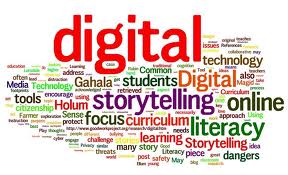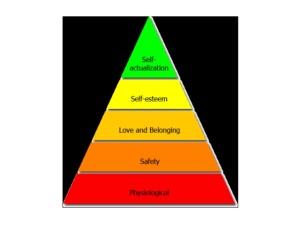This session’s focus was on what it means for children to be digitally literate. From an early group discussion, it was clear that the term ‘digital literacy’ is contested and is understood in different ways by people. The definition provided by Futurelab , 2010 introduces the term effectively: “digital literacy is the way in which people, understand, make and share meaning with digital media and technologies”.
I found myself reflecting on my use of digital technology in my education and in my life in general and it is amazing to see how things have evolved since I was at school. There is no doubt that we are living in a digital culture- where people are increasingly shopping on-line, students are researching projects on the internet and where people are communicating with friends and family through social media sites. Considering this, it is crucial that children have ample opportunity to familiarise themselves with these technologies and build their confidence to explore the use of a range of technologies so they are able to adapt and thrive in this digital age.
The ‘8 Essential Elements of Digital Literacies’ (Cultural, Cognitive,Constructive, Communicative,Confident,Creative, Critical,Civic) were introduced as we watched a video by Doug Belshaw. Views to reflect upon from the video include (a) not ranking the elements in importance as it depends on the child (b) being wary of one definition of digital literacy and (c) the need to consider context-age/geographical location/stage of development, in determining what digital technologies a child should be aware of.
The task of presenting a modern day interpretation of a fairytale using the ‘Puppet Pals’ app was an excellent way to see elements of these digital literacies in action. Reflecting on this task, I feel that it demonstrates how digital technology can be utilised to providing an engaging platform for children to be creative and work collaboratively by sharing ideas and skills and introduce them to ICT skills (collating material using the internet) .
AlthoughI firmly believe that children should have the opportunity to explore a wide range of digital technologies, there are things to consider. The issues involved with safeguarding and wellbeing and e-safety have been previously discussed in our earlier blog posts and these issues cannot be ignored. I have seen how my placement school aim to increase parents’ awareness of the potential dangers that are posed with on-line technology and I strongly believe that this should be incorporated within every schools policy.
Reflecting on this session, our explorations of a variety of digital technologies through this module and my observations on the use of ICT during my school based training has provided food for thought in my continuing professional development. One of my aims for my upcoming placements is to continue developing my own skills and confidence in the use of digital technologies so that I am able to facilitate effective learning and development of digital literacy in and outside of the classroom.
Grant,L. (2010) Connecting digital literacy between home and school [online],Futurelab
Available:http://www.futurelab.org.uk/sites/default/files/Connecting_digital_literacy_between_home_and_school.pdf [Accessed 25/11/2013)

